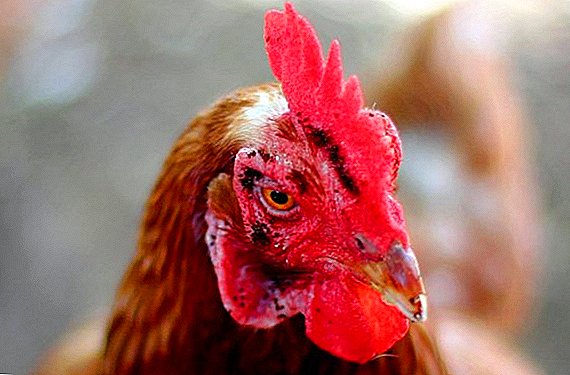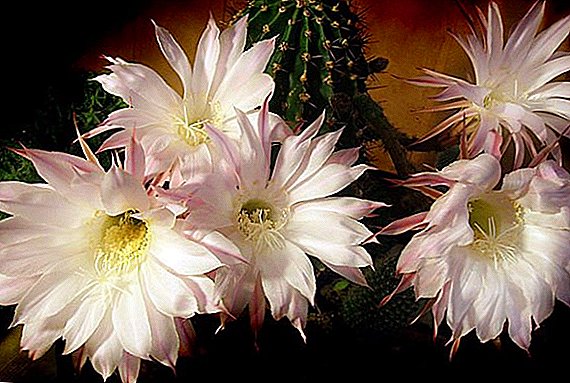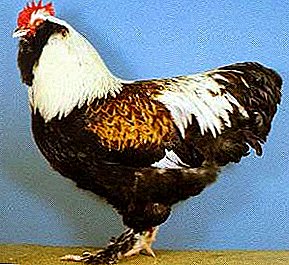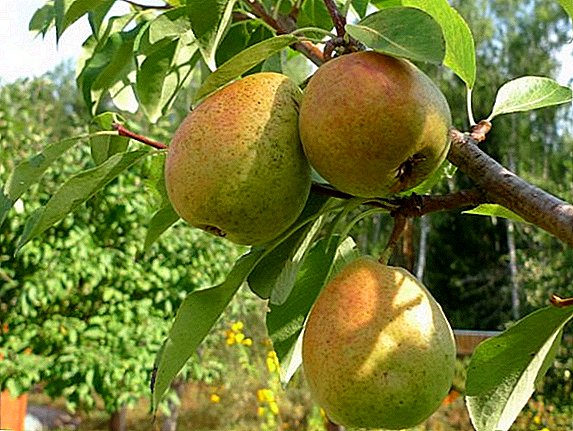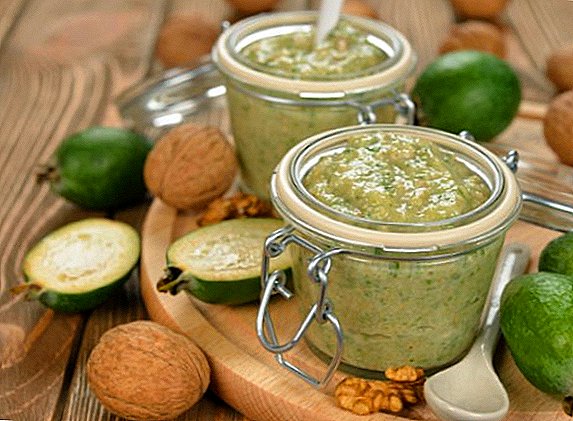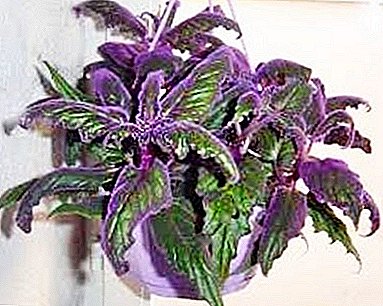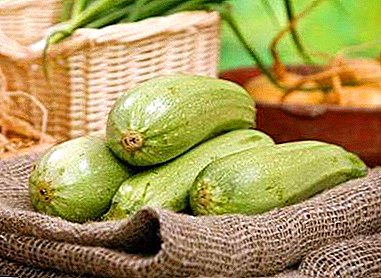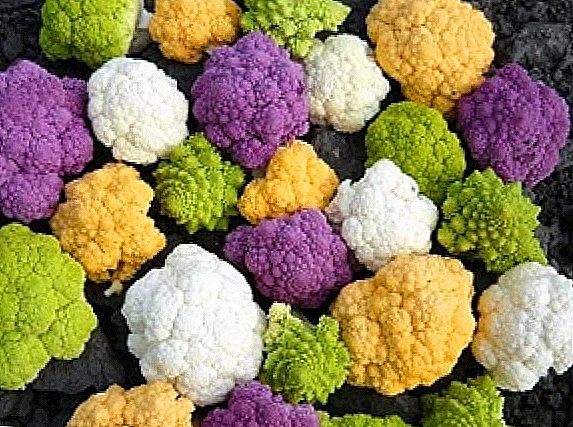
Growing cauliflower in home gardens is not so popular as growing ordinary white cabbage. The reason for this situation to a greater extent is the lack of knowledge of gardeners about the possibility of growing such cabbage in conditions with a cool climate, and unwillingness to fool around with an unknown plant.
Indeed, cauliflower is more demanding in care, however, for a large amount of attention to itself, it is able to bestow an unusually large number of various beneficial substances.
That is why we decided as best as possible to acquaint you with its features and teach you to grow in your own garden.
Not to be overlooked and how it is worth taking care of it in order to achieve the highest yields.
Preparing for planting cauliflower: get acquainted with the features of the plant, its varieties and prepare the soil and seeds
As for the cauliflower, you should pay attention to its useful properties. As noted by gastroenterologists, eating cauliflower is much better reflected in the activity of the gastrointestinal tract, since it contains much more nutrients than protein, and does not lead to bloating of the stomach.
Thus, it is recommended for both children and people suffering from gastritis, ulcers and reflux. All these facts once again confirm the need to grow such a valuable and tasty vegetable in their own garden.
Features of the cultivation of cauliflower in their own garden

The conditions of agrotechnical cauliflower are much more demanding than white cabbage, because it needs more light and heat, and also it has a weaker root system.
In particular, the temperature conditions for growing such cabbage should be between +15 and + 18ºС, since at lower temperatures the heads form very small, lose their taste qualities.
If the seedlings are stabbing, then in the open ground the plant able to tolerate frosts even down to -5 ºСbut still the danger to him remains quite high.
Also, the danger for cauliflowers are high temperatures, which are combined with high humidity. Even at + 25ºС, the heads of the plant may stall in growth, and may grow loose over time.
It is necessary to plant cauliflower seedlings only on open and sunlit areas. Although protection from the winds is also important, but when shaded (or very dense planting), the seedlings of this type of cabbage will stretch out and become less resistant to diseases.
Another feature is that with a long daylight, the heads, although they are formed much faster, but their inflorescences also break up into parts faster. With a shorter period of illumination, the head will be formed more dense, but at the same time, this process will be rather delayed in time.
More demanding this type of cabbage and the characteristics of the soil. In particular, it is best to plant this crop in light soils rich in humus and with neutral acidity. Ate the acid reaction is quite high, since the fall the soil is worth producing.
But in any case, fertilizers (organic and mineral) will have to be applied to the soil and independently, immediately with the arrival of spring time.
Preparation of soil and beds: what do cauliflowers need?
As already mentioned, cauliflower requires a large amount of nutrients, without which its growth will be impossible. For this reason, when preparing the soil, that is, digging it, humus is immediately introduced into it.
At 1m2 you can make up to 2 buckets. From mineral fertilizers it is recommended to use nitrophoska, about 2 tablespoons on the same area. To make very wide beds is not worth it, because they can cause an overabundance of moisture. However, even with very narrow beds, a weak root system of cauliflower may not be enough.
For sowing cauliflower seeds a mixture is used consisting of equal amounts of garden soil, peat and hardened humus. With the maintenance of normal humidity in such a soil, seedlings will appear very quickly.
Varieties of cauliflower and oh differences: briefly about the most famous
In general, cauliflower varieties, as well as white cabbage, are divided into 3 groups, the varieties of which we will call you. The difference between the ripening of each group is not more than 14 days.

- Early ripening varieties of cauliflower, the heads of which ripen in 85-100 days after sowing seeds. Seed collection for further propagation of cabbage is made only after 170-205 days.
The most famous varieties of this group are "Guarantee", "Early Gribovskaya 1355", "Movir 44". Very productive early cauliflower hybrids are "Snowball F1", "Baldo F1", "Alabaster F1". But, it is worth noting that hybrids are more demanding at the move, although they bear fruit much better.
- Mid-season cauliflower is represented by such varieties as "Parisian", "Ondine", "Patriotic", "Dachnitsa".
Very good and hybrids presented cabbage "Classic F1" and "Chambord F1". The heads of such cabbage are usually formed already after 120-130 days from the moment of sowing the seeds. Seeds reach maturity only after 205 or more days.
- Late-ripening cauliflower varieties also exist quite a lot. However, it should be immediately noted that their cultivation is possible only in the southern regions of Ukraine and Russia, otherwise they will give a very bad harvest or they can leave you without it at all.
The fact is that the ripening of late cabbage occurs more than 130 days after the beginning of the growing season. And the seeds ripen even longer - up to 220 days.
The cauliflower of this group is represented mainly by hybrids, among which the Cortes F1, Skywalker F1 and Fortrose F1 should be noted. All of them were produced abroad, but with warm conditions they give good results with us.
However, regardless of the group, the safety of cauliflower does not increase at all, as it happens with white cabbage. However, medium ripening varieties usually have much higher yields.
Cauliflower seeds and their preparation for planting
Preparation of cauliflower seeds for sowing for further cultivation of seedlings is carried out as follows:

- Initially, to determine the ability to germinate all the seeds, it is recommended to take about 10 pieces and try to germinate on wet tissue with constant maintenance of heat. If after 5 days these seeds do not germinate, the preparation for planting the rest can be avoided.
- To increase stability, seeds need to soak for 10-15 minutes in hot water (water temperature not higher than 50 ºС). After that, they are immediately cooled in cold water.
- During the day, the seeds must be held in a nutrient solution, which is prepared from any mineral fertilizers (you can use nitrophoska, but in small quantities).
- After removing the seeds from the solution, they must be rinsed, dried a little and sent to a cool place, with a temperature level of 1-2 ºС. It is necessary for the hardening of seeds, greatly helps to increase their resistance to various diseases.
After such procedures, the seeds are fully prepared for sowing in the ground. You shouldn’t sow them in open ground, because in the conditions of the climate of Ukraine and Russia, cauliflower is planted exclusively with the help of seedlings.
How and when to plant cauliflower: a detailed description of the features of the process
We will acquaint you with two stages of planting cauliflower: sowing seeds and direct planting of seedlings in open ground. Without taking into account the main instructions, you will risk very much, because the adaptability of cauliflower is not so high.
Having lost a little time with the planting dates or thickened your plantings, you can forget about the full harvest.
It is also interesting to read about the cultivation of Peking cabbage
Terms for planting cauliflower: what should you consider?
Sowing cauliflower seeds can be started already from March 5-10. Early varieties can be sown at this time. Later seeds are sown in the region of March 10-20.
In April, they can sow right into the ground, but be sure to cover the film. In any case, keep in mind that cauliflower seeds germinate at a temperature not lower than + 2-5 ºС.
After the seeds have already been sent to the ground, they are kept at a temperature of + 20-25 ºС, and after germination - a week kept at +10 ºС. In the future, it is very important to prevent the temperature from rising above 20 ºС, which may cause a premature start of the formation of the heads.
On the 14th day after germination, a picking can be carried out, but in order that it does not affect the growth of the seedlings, the temperature can be raised to +21 ºС for 1-2 days, then lowered back to +17 ºС.
To sow cauliflower is recommended not on one day, but at intervals of 2-3 days. This will allow a little time to stretch the ripening of its harvest, so that you can feast on fresh cabbage heads that only ripen for a longer time.
Planting cauliflower seedlings in the open ground is carried out from the beginning of May. Early varieties are planted in the first days, and from 10-20 it is possible to begin planting later varieties. But, excessive rush to plant seedlings can lead to very bad results. Therefore, even if the calendar is on May 15th, and only +15 ºС on the street - it’s better to hold off and leave the seedlings in the house or under the film.
If you plant it in such a cold, then the probability is very high that after 30 days the plant can start an arrow with seeds, without having formed a full-fledged head.
Discussing the scheme of planting cabbage seedlings

If we are talking about sowing cauliflower seeds, they need to be sown in rows. At first, at a distance of 3 centimeters from each other, shallow grooves are made. They need to spread cabbage seeds, leaving between them a distance of 1 centimeter.
So that the seeds are not stuck to the hands, they should be slightly dried. After sowing, the furrows are filled with soil and compacted slightly. At observance of the above described temperatures, shoots will appear over the soil in a week. With a strong proliferation of seedlings it should be thinned or transplanted from the boxes into separate cups.
When planting cabbage seedlings, the distance between plants should be made wider so that they do not interfere with each other and they have enough nutrients.
The most optimal scheme for planting cauliflower seedlings is 25 centimeters between plants in one row and 50 centimeters in the space between the rows. However, such a scheme is average for all groups of cauliflower varieties, and the distance between the two plants should be made appropriate to the size of their heads during the full aging period.
Care for cauliflower, which will provide you with a 100% harvest - the main rules and guidelines
To grow in conditions of medium latitude cauliflower is adapted poorly. However, it is quite possible to save the situation with regular and thorough care of the plants, which is quite capable of providing to any gardener, who does not even have much experience.
Cauliflower pests and diseases: how to prevent and combat?

There are a lot of pests and diseases of cauliflower. Among them, the most common are peronosporosis, black leg, cabbage fly, various snails and slugs, as well as the cabbage scoop and whitefish.
However, the big advantage of cabbage is that it is often quite possible to fight with its pests and diseases with the help of folk remedies: dusting plants with wood ash or tobacco.
Also, you can prepare a special solution for spraying from the stems of tomatoes, burdocks and even onion peel. All this is very effective against insects and slugs. Also, it is possible to fight against such pests by collecting the larvae and the eggs laid by them.
Dealing with diseases is more difficult. It is very important to select a clean soil, in which there are no traces of the diseases of previous plants. In the event that such diseases have already appeared, it will be more efficient to use special chemicals for spraying plants.
Watering the cauliflower beds: what regularity and volume of water is required?
Cauliflower beds should be constantly moistened, but not in excess. Immediately after planting, seedlings at a permanent place of growth should be watered 2 times a week, using at least 6-8 liters of water per m2.
Over time, the amount of water applied for one watering to the soil increases by 2-3 liters, but the irrigation itself should be started to be made more rare - only once a week.
Watering always need to focus on weather conditions. If the precipitation is regular and the soil is well-moistened, you can do without the additional application of moisture, but with strong droughts, watering should be done even more regularly and abundant.
So that the moisture does not evaporate so much from the plants, it is recommended to cover the heads with their upper leaves. After each watering, the soil should be loosened by about 8 centimeters, to prevent the formation of a crust on its surface.
Plant nutrition and soil fertilizer with cauliflower

Top dressings of cabbage are usually carried out 3-4 times per season. The first should be carried out already on the 20th day after planting the seedlings to a permanent place.
It is best suited for this solution from mullein. In particular, 0.5 liters of fertilizer should be diluted with 10 liters of water and each plant should be watered, spending 0.5 liters of solution.
Repeated feeding is carried out after 10 days. The whole procedure remains the same, only in the solution it is worth adding a tablespoon of crystal stalin and using about 1 liter of fertilizer per plant.
Another feeding can be done at the end of June, using a solution of 10 liters of water and 2 tablespoons of nitrophobia. This time around 6-8 liters of fertilizer will be spent on an area of 1m2.
How to properly conduct hardening of seedlings and why do it?
Cauliflower hardening is carried out at the seedling stage. This is done in order to increase the resistance of plants to low temperatures and bright sunlight. In order, 12-14 days before planting the seedlings in the open ground, boxes with it are brought out into the street for the daytime (if the weather permits).
If the cabbage is grown under the film, then it also needs to be raised for a while.
Cauliflower crops and their collection features
Cleaning should be carried out in accordance with the ripening heads.
In each class, these terms will be different, but usually the cauliflower fully ripens until the end of August.
It should be cut with a sharp knife, while leaving several appendage leaves.
You can save the presentation of cabbage for 2-3 months if you store it in boxes covered with plastic in rooms with a temperature of 0 ° C and humidity of 90-95%.


